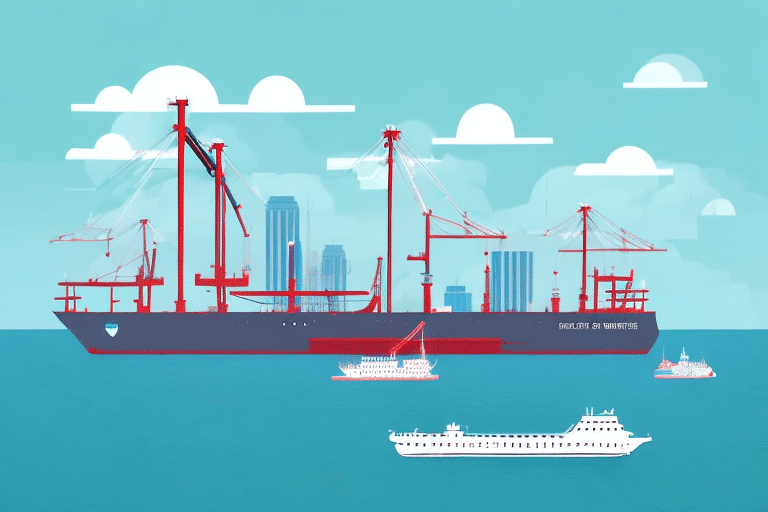Importance of Infrastructure in the Shipping Industry
Infrastructure serves as the backbone of the shipping industry, providing the essential physical and technological support necessary for the seamless movement of goods across the globe. Reliable and efficient infrastructure is crucial for reducing transit times, lowering shipping costs, and maintaining high levels of customer satisfaction. Without modern infrastructure, shipping companies encounter significant challenges in expanding their operations to meet escalating customer demands.
Real-Time Shipment Tracking
One of the pivotal benefits of contemporary infrastructure in the shipping sector is the capability to track shipments in real-time. Advanced tracking technologies enable shipping companies to monitor the movement of goods from origin to destination, ensuring timely deliveries and allowing for the proactive identification and resolution of potential issues. According to a McKinsey report, real-time tracking can reduce delivery delays by up to 30%.
Specialized Equipment and Facilities
Modern infrastructure includes specialized equipment and facilities such as deep-water ports and state-of-the-art cargo-handling systems. Ports equipped with innovative technologies can accommodate larger vessels and handle greater cargo volumes efficiently. Additionally, warehouses with advanced storage and handling systems minimize transit times and reduce the risk of damage to goods, thereby enhancing operational efficiency and providing a competitive advantage in the market.
Role of Infrastructure in Scaling Shipping Operations
Investing in infrastructure is essential for scaling shipping operations, enabling companies to manage larger volumes of goods, penetrate new markets, and enhance supply chain efficiency. Modern transport links, including highways and rail connections, facilitate faster and more cost-effective shipping, while smart warehouses and logistics hubs optimize inventory management.
Advanced Transportation Networks
Efficient transportation networks are vital for scaling operations. For example, the expansion of the World Bank-supported Belt and Road Initiative has significantly improved shipping routes, reducing transit times and costs for international trade.
Emerging Technologies
Incorporating technologies such as blockchain and artificial intelligence (AI) into infrastructure investments allows shipping companies to enhance real-time tracking and streamline supply chain management. According to a World Economic Forum report, blockchain can improve supply chain transparency and reduce paperwork by up to 80%.
Enhancing Shipping Efficiency through Infrastructure Investment
Infrastructure investment directly contributes to improved efficiency within shipping companies. By modernizing infrastructure, companies can streamline operations, minimize delays, and reduce operational costs. Technologies like automation, predictive analytics, and the Internet of Things (IoT) play a significant role in optimizing the supply chain, reducing waste, and enhancing customer service.
Automation and Predictive Analytics
Automated warehouses accelerate order fulfillment processes, while predictive analytics help in forecasting demand and managing inventory more effectively. The use of AI-driven analytics can lead to a 20% increase in operational efficiency, as noted in a Forbes article.
Internet of Things (IoT) Integration
IoT sensors provide real-time data on the location and condition of goods in transit, ensuring their safe and timely arrival. This technological integration helps in monitoring and maintaining the quality of goods, thereby enhancing customer satisfaction.
Benefits of Modern Infrastructure for Shipping Companies
The advantages of investing in modern infrastructure extend beyond mere operational efficiency. Shipping companies benefit from increased competitiveness, enhanced customer satisfaction, and superior risk management. Infrastructure investments also open up new market opportunities, positioning companies for sustained growth and success.
Environmental Sustainability
Modern infrastructure often incorporates sustainable practices, such as renewable energy sources and energy-efficient designs. For instance, green ports that utilize solar and wind energy reduce the carbon footprint of shipping operations. This not only benefits the environment but also enhances the company's reputation among environmentally conscious consumers.
Safety and Security Enhancements
Upgraded ports and terminals with advanced security measures mitigate risks related to theft, piracy, and other security threats. Enhanced security protocols protect valuable cargo and assets, providing peace of mind for both companies and their clients.
Challenges of Scaling Shipping Operations without Infrastructure Investment
Neglecting infrastructure investment can lead to numerous challenges for shipping companies, including increased costs and supply chain inefficiencies. Operating with outdated infrastructure may result in bottlenecks, delays, and dissatisfied customers, making it difficult to compete and expand operations.
Lack of Automation
Without automated systems, shipping companies may struggle to manage increasing demands, leading to manual errors and higher operational costs. Automation technologies, such as robotics and AI, are essential for maintaining efficiency and scalability.
Environmental Impact
Outdated infrastructure often lacks sustainable features, resulting in higher carbon emissions and environmental degradation. Investing in sustainable infrastructure is crucial for reducing the carbon footprint and meeting regulatory and consumer demands for eco-friendly practices.
Evaluating the ROI of Infrastructure Investments in Shipping
Assessing the return on investment (ROI) for infrastructure projects is vital for informed decision-making. Shipping companies must consider factors such as cost reductions, efficiency improvements, customer satisfaction, and revenue growth against the initial capital and maintenance expenses.
Cost-Benefit Analysis
Conducting a thorough cost-benefit analysis helps determine the financial viability of infrastructure projects. For example, investing in automated systems may have a high upfront cost but can lead to significant long-term savings by reducing labor costs and minimizing errors.
Strategic Investment Planning
Shipping companies should prioritize infrastructure projects based on their potential impact on operations and growth. Collaborating with government agencies, technology providers, and other stakeholders can optimize investment outcomes and maximize ROI.
Future Trends in Infrastructure Investment for the Shipping Industry
The future of infrastructure investment in the shipping industry is poised to be shaped by emerging technologies and innovative practices. Autonomous vessels, drones, and smart logistics hubs are expected to play increasing roles, driving further efficiency and sustainability.
Autonomous Vessels and Drones
Autonomous shipping vessels and drones are set to revolutionize the industry by reducing the need for manual labor and enhancing operational efficiency. These technologies can lower operational costs and improve delivery times, making shipping more competitive.
Smart Warehouses and Logistics Hubs
Investment in smart warehouses equipped with advanced software systems and IoT devices will continue to enhance supply chain management. These innovations enable real-time inventory tracking, predictive maintenance, and streamlined operations.
Best Practices for Investing in Infrastructure to Scale Shipping Operations
Successful infrastructure investment requires strategic planning and adherence to best practices. Shipping companies should focus on identifying critical areas for improvement, collaborating with key stakeholders, and continuously evaluating the effectiveness of their investments.
Identifying Critical Infrastructure Needs
Conducting a comprehensive assessment of existing infrastructure helps identify areas that require upgrades or expansion. Prioritizing investments based on impact and feasibility ensures that resources are allocated efficiently.
Collaboration and Partnerships
Partnering with government agencies, technology providers, and other industry players can provide access to resources and expertise necessary for successful infrastructure projects. Collaborative efforts can also lead to shared best practices and cost-effective solutions.
Conclusion
Investing in infrastructure is paramount for scaling shipping operations and enhancing efficiency within the shipping industry. From modern ports and transportation networks to advanced warehouses and cutting-edge technologies, robust infrastructure reduces transit times, cuts costs, and maintains high levels of customer satisfaction. By strategically prioritizing infrastructure investments, fostering collaborations, and embracing emerging technologies, shipping companies can secure long-term growth and thrive in a competitive and rapidly evolving global marketplace.




















